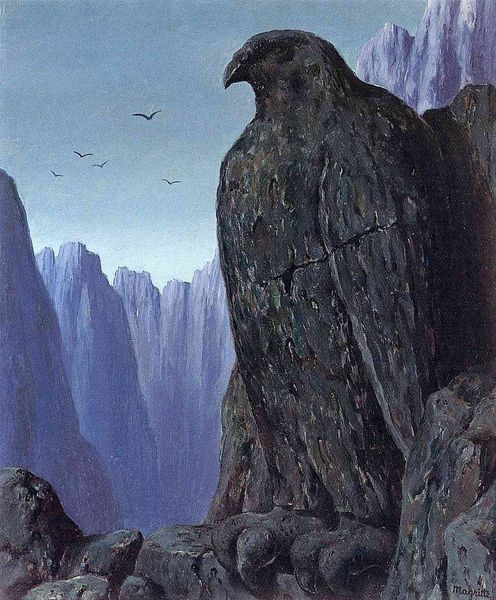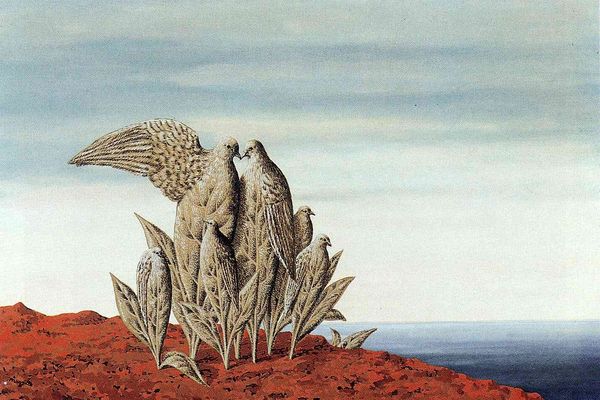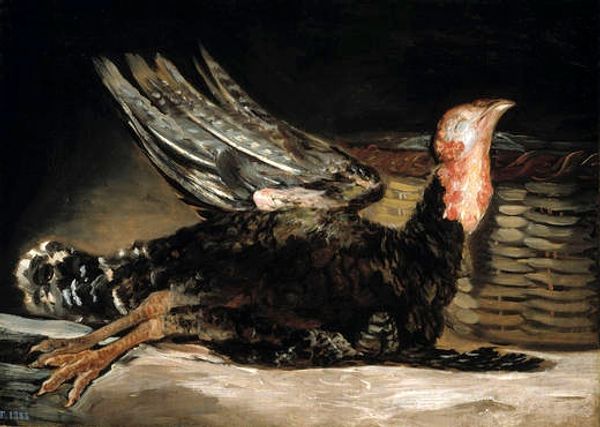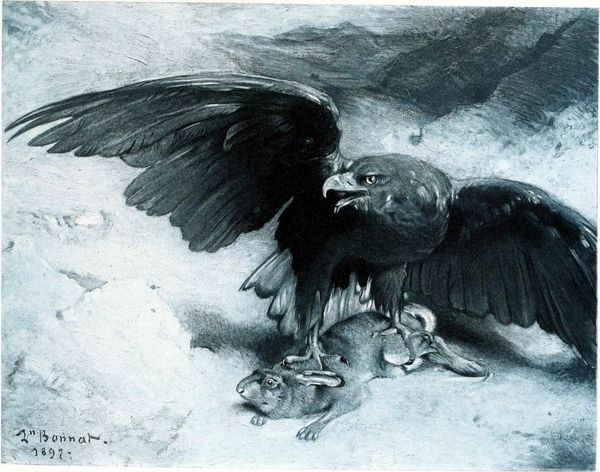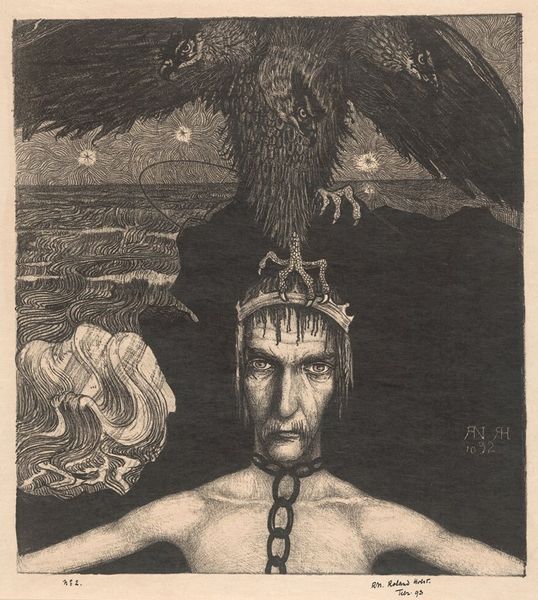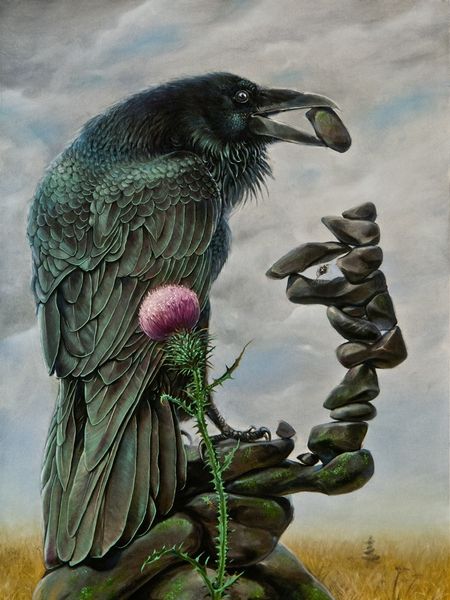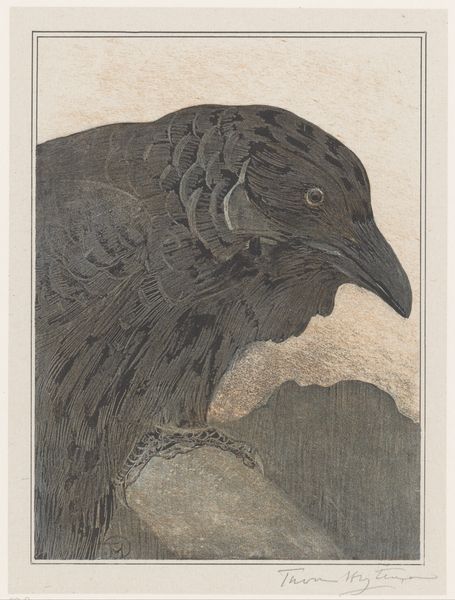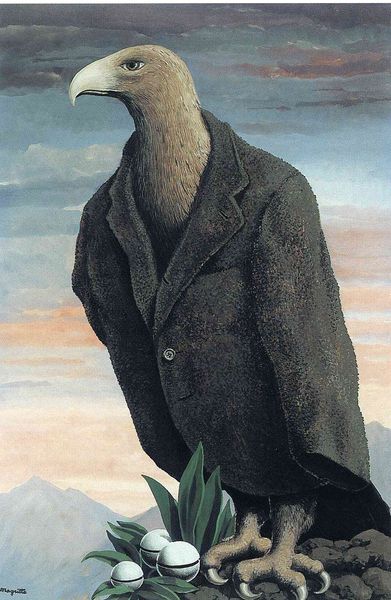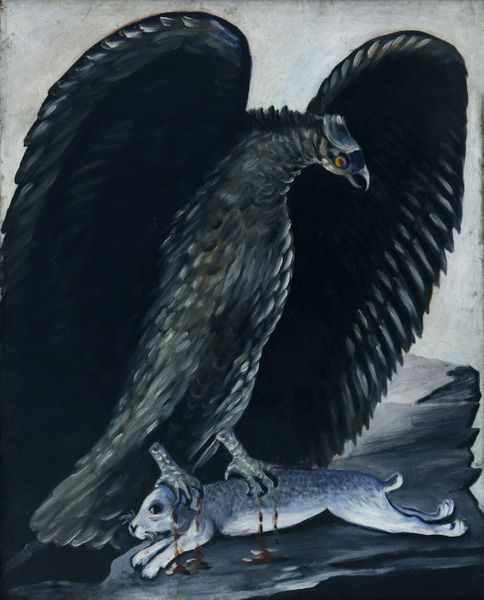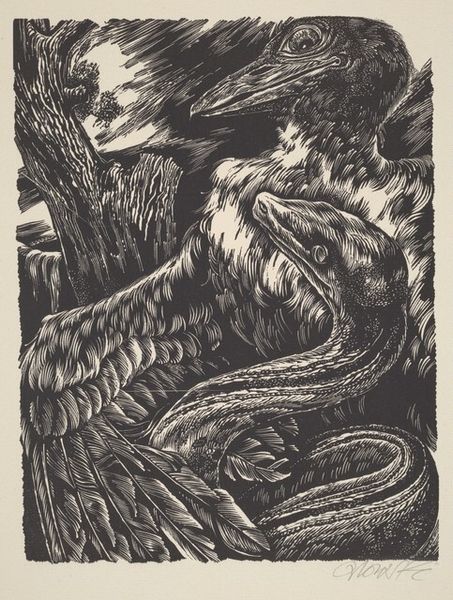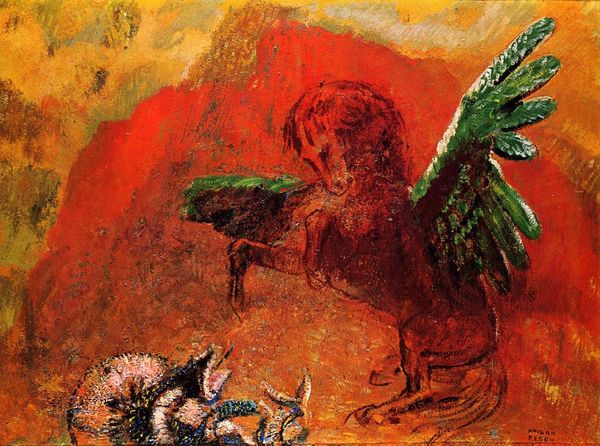
painting, oil-paint
#
portrait
#
painting
#
oil-paint
#
landscape
#
bird
#
oil painting
#
surrealist
#
surrealism
Copyright: Rene Magritte,Fair Use
Editor: This is René Magritte’s “Prince Charming,” painted in 1948 using oil on canvas. It’s quite striking; the sheer scale of the dark bird compared to the smaller birds and landscape feels very surreal and a bit ominous. What visual elements stand out to you in this piece? Curator: The spatial relationships are certainly key. Note the foregrounding of the massive, dark bird figure against the comparatively diminutive cluster of white birds, positioned in what reads as the middle ground, receding into a pale, atmospheric landscape. It is, fundamentally, about juxtaposition and scale. How does that affect your understanding? Editor: Well, the oversized bird dominates, it creates a sense of unease and power. Its dark color and proximity force my eye to focus on it first. Is that the primary purpose of such scale disruption? Curator: I posit that the effectiveness stems from its inherent disruption of visual expectations. Magritte carefully balances the tonal contrast, the feathery textures, and the almost anthropomorphic presence of the large bird. The blue drape, for instance, enhances a somber effect by introducing an element of concealment, perhaps even humanisation, into an otherwise naturalistic avian form. This leads us to consider what formal tensions it is evoking. Editor: The blue drape is unexpected, almost like a veil. I see the contrasts of dark/light and large/small. It feels like a puzzle with a beautiful and rather unnerving aesthetic. Curator: Precisely. By meticulously manipulating formal elements, Magritte transforms the familiar into something decidedly uncanny. Consider how the arrangement complicates our comprehension of spatial logic. What assumptions about perspective are challenged? Editor: This really makes you look closely at each component of the painting and then question its relationship to everything else in the composition. I see what you mean. Thanks! Curator: Indeed. The piece rewards close and repeated viewing and reveals how its formal design underscores themes of displacement.
Comments
No comments
Be the first to comment and join the conversation on the ultimate creative platform.
